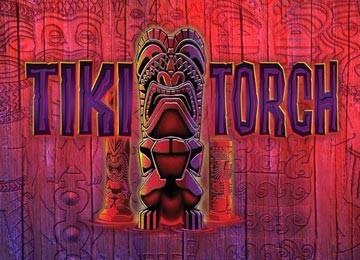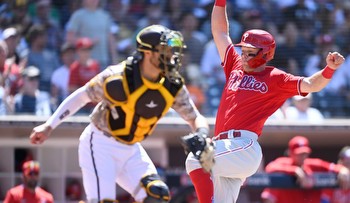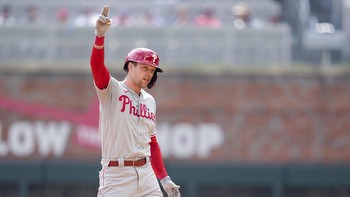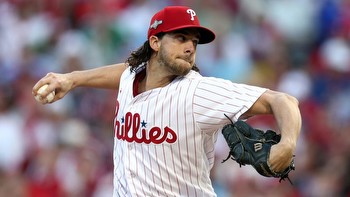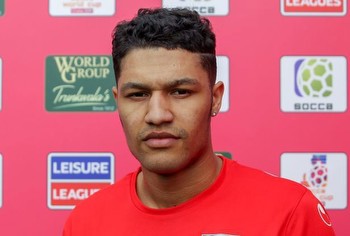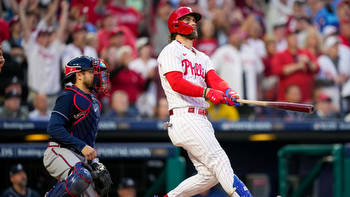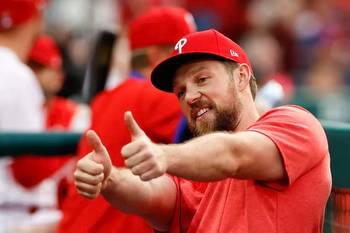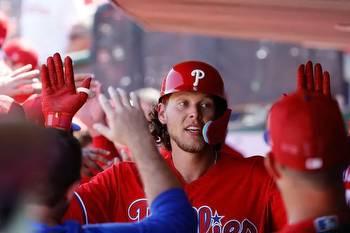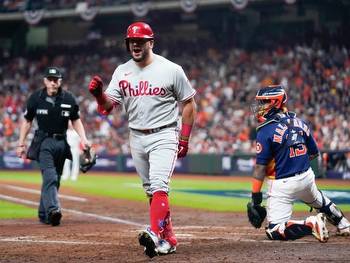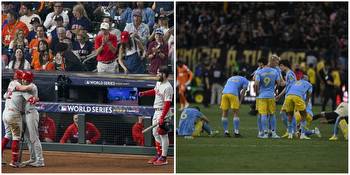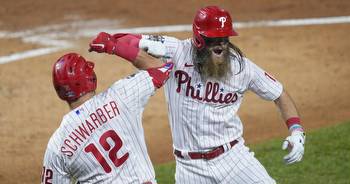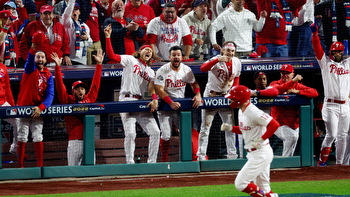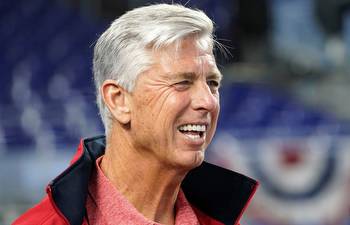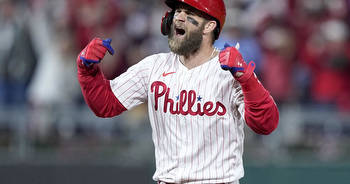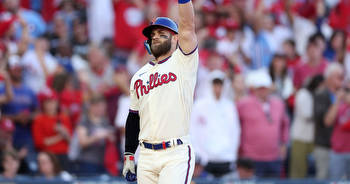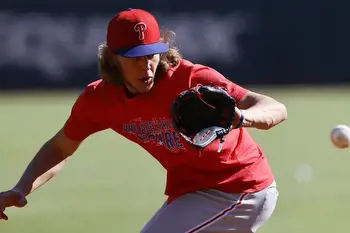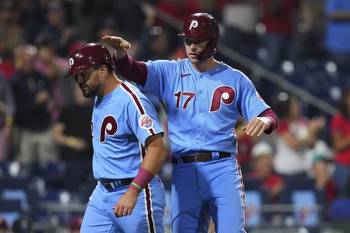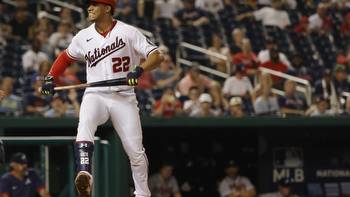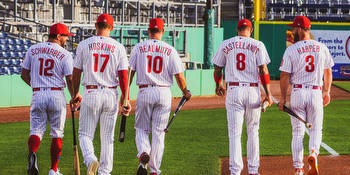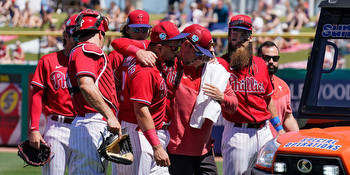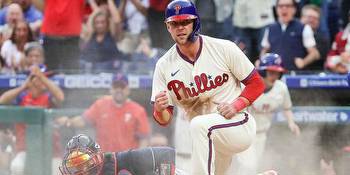Rhys Hoskins’ Phillies career might be over. He had his lows, but the highs …
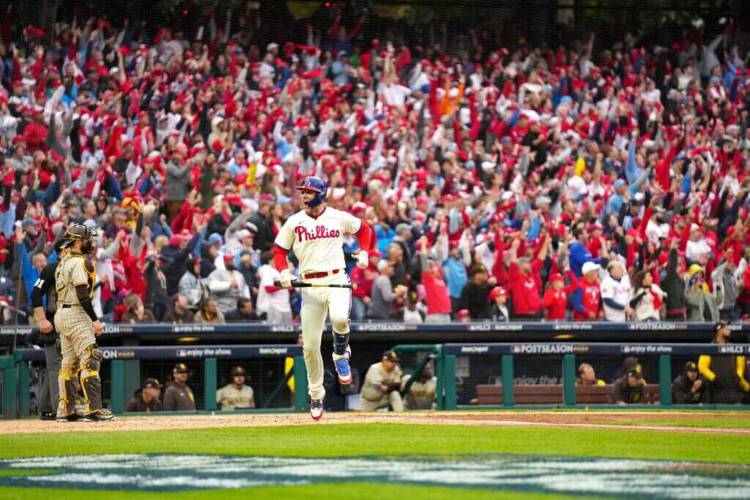
Rhys Hoskins sat at a picnic table one morning in March 2021 and, for 30 minutes, he agreed to talk about perception. This was a sensitive topic then — and now — because everyone in Philadelphia has an opinion about Hoskins. He has, since 2017, been the most scrutinized Phillies player. He had thoughts he wanted to share. But he was never sure if sharing them was productive.
What, he was asked halfway through the interview, do you want the image of Rhys Hoskins to be?
“I don’t think I want it to change,” he said. “I want to be known as a good person. First. Someone that cares about people. Obviously, I love this game. I want to be respected in that clubhouse. I want to know that I’ve come here every single day and done the work that I know I need to do the way that it needs to be done.
“There’s a quote from ‘The Last Dance’ where (Michael) Jordan says, ‘I wanted to work as hard as I could because I wanted to be able to ask the people around me to do the same thing.’ And that looks different for every person, right? But that kind of stuck with me. I’ve never really been a vocal guy. So if I can lead in a way by what I’m doing, how much I care, and the things I think need to be done for us to be successful — I think that’s a pretty good thing to be remembered for. I’d also like to be known as a winner before this is all done. I think we’re on our way to that.”
There are people who think they have an image of Rhys Hoskins. Or there’s an image of Rhys Hoskins they want.
“What do you think it is?” he asked.
The image of him as a player?
“No,” Hoskins said. “Why do you think I’ve been under more of a watchful eye than anyone else?”
It was how he came to the majors. He was so good, so fast. He was the brightest glimmer of hope for a franchise that craved it. It was the timing. Before Aaron Nola became a top-of-the-rotation pitcher. Before J.T. Realmuto. Before “stupid money.” Before Bryce Harper. Before … everything.
“We weren’t good,” Hoskins said.
And he was streaky. There were so many ups and downs. Too many. People tend to remember the lows — not the highs.
“So do I,” he said. “So do we. That’s how we operate. Like, I definitely understand that.”
More than anything, people wanted Rhys Hoskins to be good. They saw it when it was really, really good. They wanted that guy — all the time. But that’s not how it works. Sometimes, they overlooked what it actually was. The good, the bad, and everything in between.
“I’ll take it,” he said that day.
On Thursday afternoon, about 150 feet from that picnic table, Rhys Hoskins’ career with the Phillies might have ended. Maybe he should have fielded the ball hit to him more cleanly. Maybe his spike wouldn’t have caught the grass at an awkward angle and his left leg would not have twisted, tearing the anterior cruciate ligament and forcing a surgery that — barring a miracle — ends his 2023 season before it ever started.
He was always this franchise’s tragic figure. Misplaced as the best player on dreadful teams. Installed as the club’s de facto spokesman for collapse after collapse. And, finally, a solid player on a team full of stars with such great expectations. This was the best Phillies team ever assembled around Rhys Hoskins, and now, he will not be part of it.
Hoskins debuted in a 10-0 loss to the Mets. It was August 2017. Vince Velasquez was yanked after he allowed three runs in a 32-pitch first inning. Only one other player from that day’s Phillies lineup, César Hernández, is still active in the majors — and that’s as a non-roster invitee trying to make the Detroit Tigers. Hoskins played left field — a position he learned on the fly — because the Phillies did not want to displace Tommy Joseph, who never played in the majors again after 2017.
Hoskins homered twice in his fifth game. Then, he homered 16 times in his next 29 games. He started a triple play from left field. He finished fourth in National League Rookie of the Year voting. Then, in 2018, he misplayed a fly ball that led to six unearned runs in a 20-run loss that was broadcasted only on Facebook. He hit 34 homers. He took that September — an epic Phillies collapse — hard. He never played left field again.
He wondered if he would ever have his moment in Philadelphia. Everyone around him signed an extension. His friend, Scott Kingery, signed one before he ever played a big-league game. Hoskins bought a row home in Philadelphia with his wife, Jayme. They dedicated time to the community. He saw teammate after teammate — guys he thought would be at Citizens Bank Park when the clouds were lifted — depart. He answered the questions. He took the blame. He posted a career 125 OPS+ — 25 percent better than league average.
Last October, a few hours before the Phillies won to clinch his first postseason, Hoskins took time to reflect. “One of my favorite things is whenever something pops up on Twitter, like, the lineup from, say, September 25, 2018,” Hoskins said. “You know? It’s like, wow. Where we were as an organization to where we are now. Just the names. It’s crazy. It’s crazy different.”
He lost millions of dollars Thursday afternoon when the ligament in his left knee popped. It’s not impossible that Hoskins, a free agent after this season, returns. Maybe this injury increases the odds of a short-term deal with the Phillies. The first year following ACL surgery is a difficult one. He could be the designated hitter in 2024 with Harper back in right field. Maybe. Maybe not.
A few weeks ago, Bobby Dickerson shook his head. The veteran infield coach has seen everything in this game. He knew Hoskins’ game had limitations. There was no sidestepping it. But that didn’t match the sometimes-jaded perception of him.
“I can never be mad at Rhys Hoskins,” Dickerson said. “Ever. Because his want to, his work ethic, his care about the Phillies, his care about the city of Philadelphia, his care about where we go as an organization — all those things are off the charts. They’re the highest of highest of highest levels.”
Maybe the Phillies will look back at Game 3 of last year’s National League Division Series — the day postseason baseball returned to Citizens Bank Park — as the start of the next great era. Maybe not. But Hoskins’ swing and his bat spike will forever be a part of the ballpark’s fabric. The moment dripped with symbolism.
“No one I think on this team deserves that moment more than he does,” Nick Castellanos said afterward.
He was right.
In a few weeks, the Phillies will receive their rings to commemorate a National League championship. There will be an extravagant pregame ceremony. The players will be introduced and, maybe, Hoskins with his crutches can join them on the grass. Maybe there will be louder cheers for some of his teammates. That’s OK.
“It’s interesting that you asked that,” Hoskins said on that March morning two years ago. “I get asked that a lot.”
Asked what?
“Just, like, why?” Hoskins said. “Why is the perception like that? So it’s interesting.”
Maybe it’s best, instead, to remember the highs.
